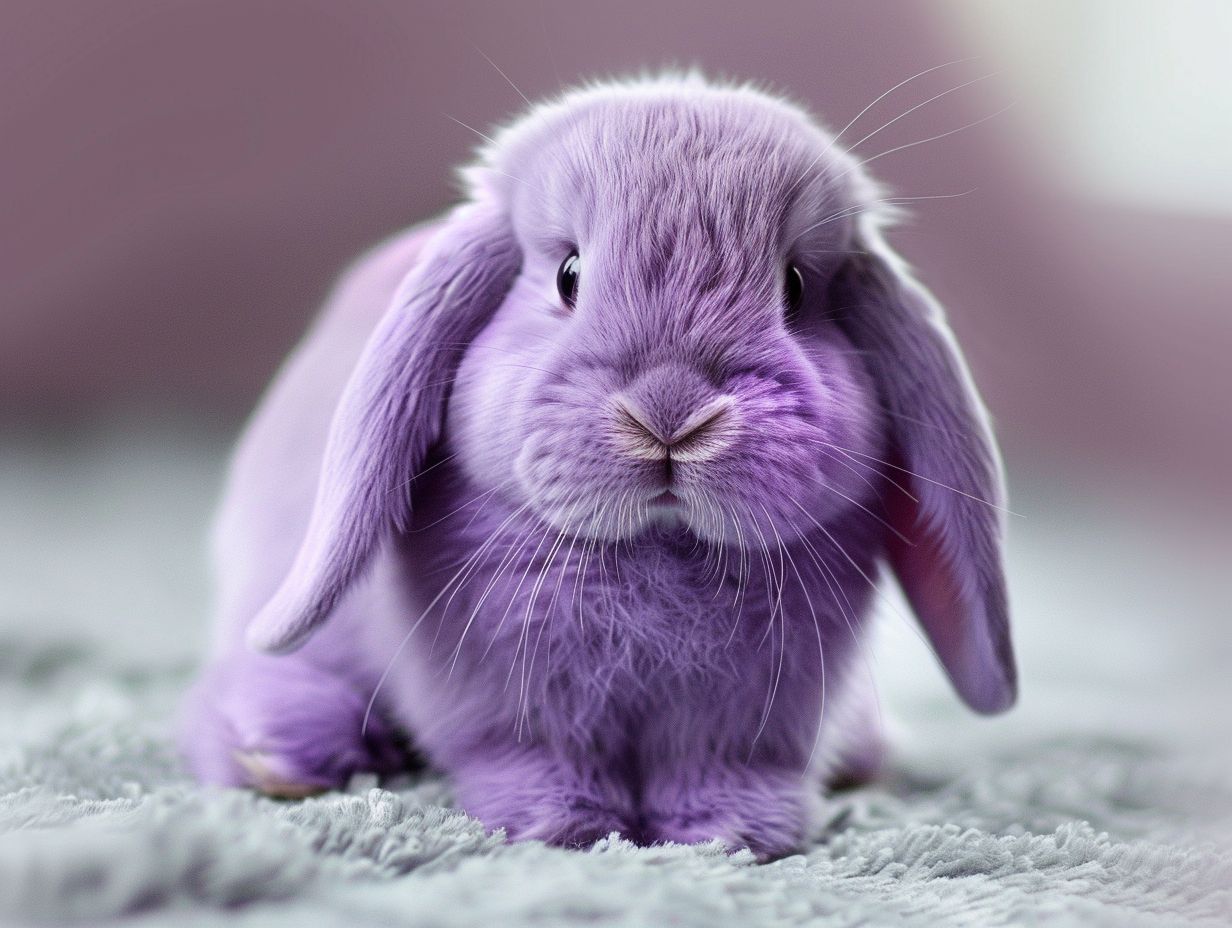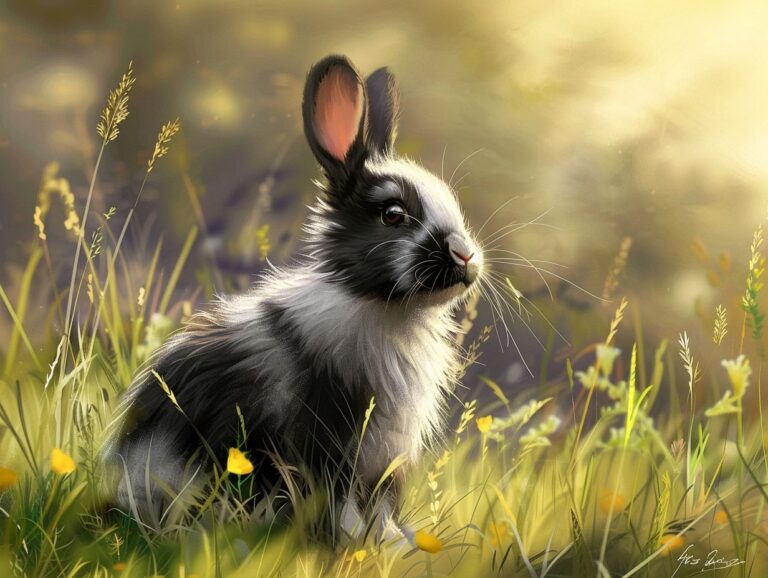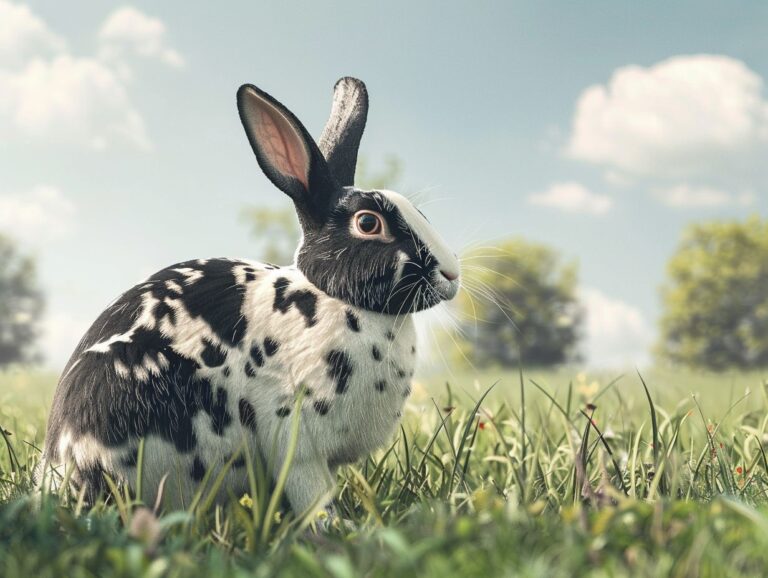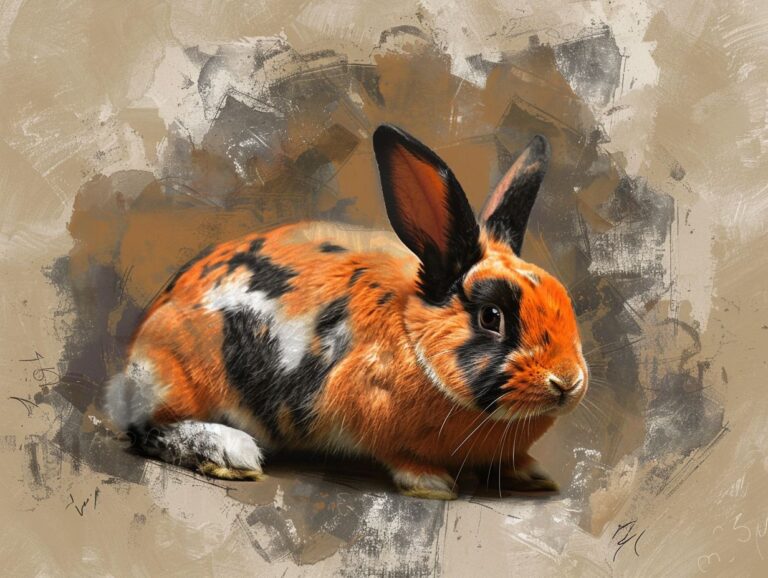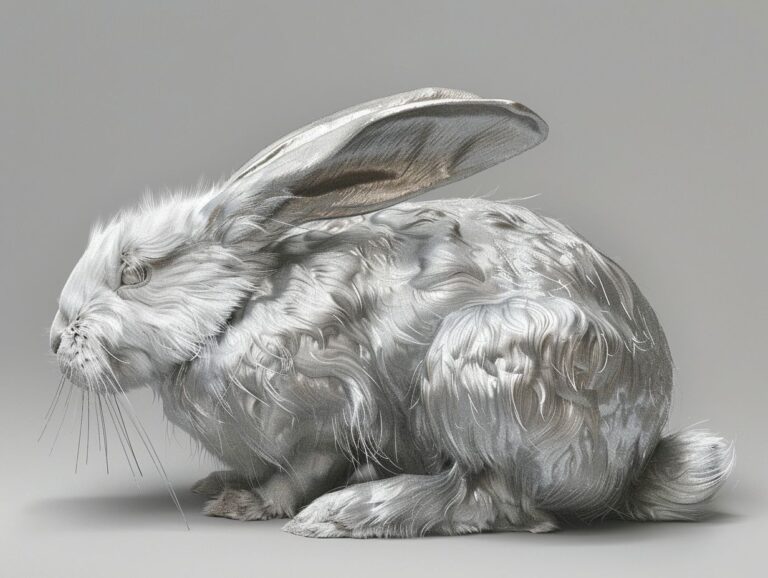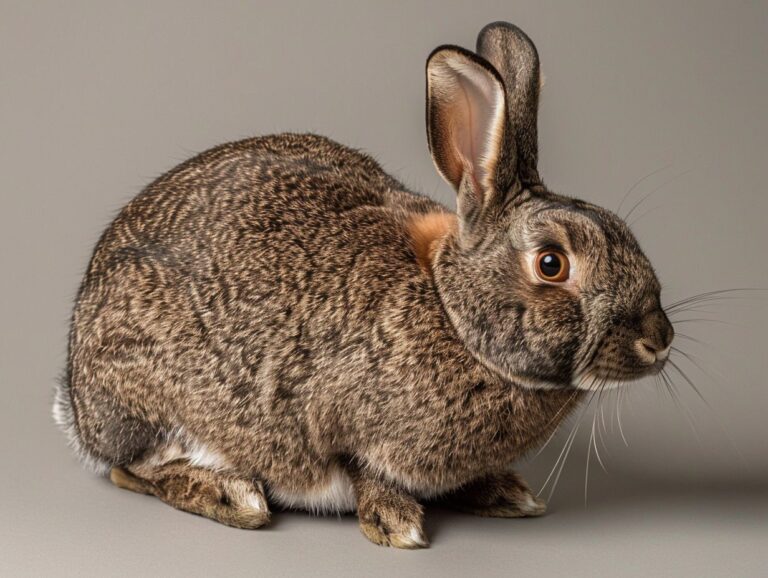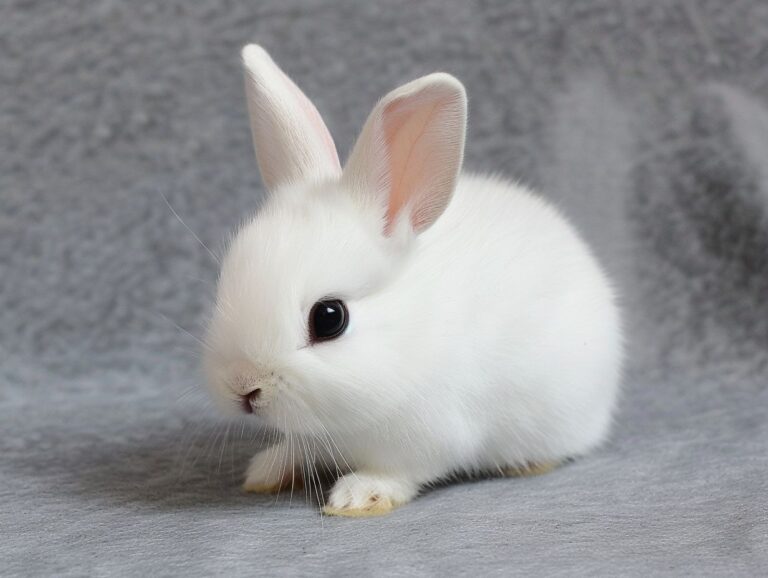Lilac Rabbit Breed: Characteristics, Care, History, and Breeding Practices
Are you interested in learning more about the unique Lilac Rabbit Breed?
We will explore the physical appearance, temperament, and health concerns of these adorable rabbits.
Delve into the fascinating history of the breed, as well as get tips on how to care for a Lilac Rabbit including feeding, housing, grooming, and exercise.
We discuss breeding practices such as selecting breeding stock, mating, caring for newborns, and health testing.
Join us as we unravel the world of Lilac Rabbits!
Key Takeaways:
What Is The Lilac Rabbit Breed?
The Lilac rabbit is a distinct breed known for its unique coloration and heritage. This standard breed is popular among beginners due to its docile nature. Originating in England, this breed exhibits specific characteristics that make it a favorite choice for various uses.
Originally developed in the early 20th century, the Lilac rabbit gets its name from its beautiful lavender-grey fur, reminiscent of the lilac flower. Their color is a result of a dilution gene acting on the black coat color, creating the lovely shade that sets them apart.
Aside from their striking appearance, they are known for their gentle temperament, making them ideal for first-time rabbit owners. Silver rabbit breed are sociable creatures that enjoy human companionship, often seeking out a cuddle or a stroke from their owners.
These rabbits are also great for families with children as they are patient and tolerant, making them excellent pets for teaching responsibility and empathy.
What Are The Characteristics Of The Lilac Rabbit Breed?
The Lilac rabbit breed is recognized for its unique color palette, featuring a cobby body structure and fur that comes in shades of lavender and grey. With pale blue-gray eyes, these medium-sized rabbits are known for their gentle and hardy nature, showcasing good climate tolerance.
The Lilac rabbits are characterized by their short, plush fur that requires regular grooming to maintain its softness and luster. Their rounded bodies are compact, yet muscular, giving them a sturdy appearance. In terms of temperament, these rabbits are typically calm and sociable, which makes them excellent companions for both children and adults alike.
Physical Appearance
The physical appearance of Lilac rabbits is characterized by their distinctive fur coloration in shades of lavender and grey. They have pale blue-gray eyes that complement their cobby body structure, making them a medium-sized breed.
These charming rabbits fur is soft and velvety, creating a striking contrast against their unique eye color. Their ears are medium in length and stand erect, adding to their adorable appearance.
Mini Lop Rabbit Breed: Characteristics, Care, History, and Breeding Practices.
Havana rabbit breed fur is dense and smooth to the touch, with a lovely sheen that accentuates their elegant demeanor. Their compact bodies are well-rounded and muscular, giving them a solid and sturdy silhouette.
As medium-sized rabbits, they exhibit a harmonious balance in their proportions, with a graceful posture and a lively presence that captures the attention of all who observe them.
Temperament
Lilac rabbits are known for their gentle and docile temperament, making them an ideal choice for beginners or those seeking a calm and friendly pet.
Their sweet and affectionate nature often sets them apart from other breeds, as they tend to form strong bonds with their owners. These rabbits thrive on human interaction, enjoying being cuddled and petted, making them wonderful companions for individuals of all ages. Their calm demeanor also makes them a good fit for families with children, as they are less prone to aggression and are generally patient and tolerant. In addition, Lilac rabbits are known for their playful antics, adding a touch of joy and entertainment to their charming personalities.
Health Concerns
Lilac rabbits are known for being hardy and generally have a good lifespan. Like all breeds, they may have specific health concerns that owners should be aware of and monitor closely.
One common health concern in Alaskan rabbit breed is gastrointestinal stasis, which can be caused by a diet lacking in fiber or inadequate water intake. Ensuring they have a diet rich in fiber from hay and fresh vegetables can help prevent this issue. Regularly checking their teeth is essential, as dental problems are also prevalent in rabbits.
Exercise is crucial for maintaining their overall health and preventing obesity. Providing them with enough space to hop around and explore can help keep them active and prevent health issues related to inactivity.
What Is The History Of The Lilac Rabbit Breed?

Initially bred by British rabbit enthusiasts, the Lilac rabbit’s journey to America began through the efforts of dedicated breeders who saw the potential of this unique breed. Its distinctive lilac-colored fur and gentle temperament captivated rabbit enthusiasts worldwide, leading to its recognition by prominent organizations such as the Livestock Conservancy.
The Lilac rabbit’s pedigree is deeply intertwined with the rural landscapes and traditions of the United Kingdom, where its elegant appearance and calm demeanor made it a favorite among breeders. This breed’s significance lies not only in its physical attributes but also in its role as a living link to the agricultural heritage of England.
How To Care For A Lilac Rabbit?
Caring for a Lilac rabbit involves providing proper nutrition, suitable housing, regular grooming, and opportunities for exercise. As a pet, these rabbits require attention to their climate tolerance and specific care needs.
Feeding a Polish rabbit breed should consist of a balanced diet rich in high-quality hay, fresh vegetables, and limited pelleted food. It’s essential to provide fresh water daily and monitor their dietary intake to prevent obesity and digestive issues.
Regarding housing, these rabbits need a spacious and well-ventilated enclosure with a comfortable resting area and hiding spots. Regular brushing and nail trimming are necessary for their grooming, along with occasional baths to keep their coat clean. Learn more about the Himalayan rabbit breed here.
Engaging them in play and providing opportunities for exercise, such as supervised time outside of their enclosure, promotes their physical and mental well-being.
Feeding and Nutrition
Feeding a Lilac rabbit requires a balanced diet that includes hay, fresh vegetables, and a quality rabbit pellet mix. Ensuring proper nutrition is essential for maintaining their health and well-being.
The hay in a Lilac rabbit’s diet is crucial as it helps maintain their digestive health and wears down their teeth, which constantly grow. Fresh vegetables provide essential vitamins and minerals; options like kale, carrots, and cilantro are excellent choices. Alongside these, a high-quality rabbit pellet mix serves as a source of concentrated nutrients. It’s important to offer a variety of foods to prevent nutrient deficiencies and encourage natural foraging behaviors.
Housing
Creating a suitable housing environment for a Lilac rabbit involves providing a spacious and secure enclosure that offers comfort and safety. Proper housing is crucial for their well-being and happiness as a pet.
When setting up the housing for a Florida White rabbit breed, it’s essential to consider the bedding material used. Opt for soft and dust-free options like hay or straw, which provide insulation and a cozy nesting spot.
The enclosure should include a sheltered area where the rabbit can retreat for privacy and protection. Including stimulating environmental enrichment such as straw toys, tunnels, or platforms can prevent boredom and promote physical and mental exercise for the rabbit’s well-being.
Grooming
Grooming a Lilac rabbit involves regular brushing to maintain their fur quality and cleanliness. It is essential to groom them properly to prevent matting and skin issues, ensuring they stay healthy and comfortable.
Regular grooming sessions not only keep the rabbit’s fur looking neat and tidy but also help in distributing natural oils, promoting a healthy coat. When brushing, remember to gently detangle any knots or matting using a suitable brush designed for rabbits. Paying attention to their nails is crucial to prevent overgrowth and potential discomfort. A regular grooming routine also allows you to inspect their overall health, ensuring early detection of any issues for timely intervention.
Exercise
Providing adequate exercise opportunities for a Lilac rabbit is crucial for their physical and mental well-being. Regular playtime and access to space for hopping and exploring are essential for maintaining their health as a pet.
Aside from physical health benefits, exercise also plays a significant role in supporting the mental stimulation and emotional well-being of a Lilac rabbit. Engaging in various enrichment activities such as tunnel exploration, obstacle courses, and interactive toys can prevent boredom and improve their overall quality of life. By incorporating regular exercise routines into their daily schedule, owners can help prevent obesity, promote proper digestion, and strengthen their bond with these gentle and curious creatures.
What Are The Breeding Practices For Lilac Rabbits?

When selecting breeding stock for Lilac rabbits, it is crucial to consider not only their physical characteristics but also their genetic background. This ensures that the offspring will align with the breed’s desired traits and standards. By adhering to these guidelines, breeders contribute to the conservation of the Lilac rabbit lineage, maintaining its distinct features and overall health.
The Livestock Conservancy and the NLRCA provide valuable resources and support for breeders, offering guidance on best practices, health considerations, and genetic diversity. Through their initiatives, these organizations aim to safeguard the heritage of the Lilac rabbit and promote ethical breeding within the community.
Selecting Breeding Stock
Selecting breeding stock for Lilac rabbits involves choosing individuals that meet the breed’s heritage standards and characteristics. Collaboration with organizations like the Livestock Conservancy ensures responsible breeding practices.
When looking for breeding stock, it’s crucial to focus on preserving the unique traits of Lilac rabbits that have been passed down through generations. Preserving these heritage characteristics not only honors the breed’s history but also contributes to its long-term sustainability. By adhering strictly to established breed standards, breeders can maintain the distinct coloration and temperament that define Lilac rabbits.
Partnering with organizations like the Livestock Conservancy allows breeders to access valuable resources, guidance, and networks within the rabbit breeding community. These partnerships not only facilitate knowledge-sharing but also help in maintaining a diverse and healthy population of Lilac rabbits.
Mating and Pregnancy
Mating and pregnancy processes in Lilac rabbits require careful monitoring and attention to ensure the health and well-being of the rabbits. Understanding the breeding cycle and providing proper care during pregnancy are essential for successful reproduction.
During the mating stage, male Lilac rabbits will show signs of increased interest in the female rabbits, often by chasing and mounting them. It’s crucial to observe this behavior to determine the optimal time for successful breeding.
Once mating occurs, the pregnancy period typically lasts around 28-32 days. Monitoring the pregnant doe’s diet, providing a comfortable nest box, and minimizing stress are vital considerations to support a healthy pregnancy.
As the due date approaches, paying attention to the doe’s behavior and nesting preparations is crucial. Being prepared for the birthing process, including having a clean and quiet environment, can help ensure a smooth delivery.
Caring for Newborns
Caring for newborn Lilac rabbits involves providing a safe and warm environment, monitoring their health, and ensuring proper nutrition for the mother and kits. Early care is crucial for the well-being and development of the newborn rabbits.
Creating a cozy nest with soft bedding is essential for the comfort and safety of the newborns. Regularly checking the mother’s health post-birth, including monitoring her food and water intake, is vital to ensure she can adequately nurse her kits. Proper nutrition for the mother should include high-quality hay, fresh vegetables, and a balanced pellet diet. For the kits, offering a special milk replacement formula if needed and introducing hay and pellets gradually as they grow older is recommended.
Weaning and Separation
The weaning and separation process for Lilac rabbits involves gradually transitioning the kits to solid food and separating them from the mother at the appropriate age. Proper weaning and separation practices support the rabbits’ growth and independence.
Regarding transitioning to solid food, it is important to introduce it gradually to avoid digestive issues. You can start by offering small amounts of hay and pellets, gradually decreasing the reliance on milk. Weaning typically starts around 4-6 weeks of age, but monitoring the kits’ readiness is key for the Rhinelander rabbit breed.
For more information on the American rabbit breed, including characteristics, care, history, and breeding practices, click here.
The separation should be done around 8 weeks to allow the kits to develop social skills and independence. Providing a suitable environment with adequate space and enrichment can help the kits adjust smoothly to the separation process. Ensuring that the kits have access to clean water and a balanced diet is essential for their growth and overall well-being.
Health Testing and Record Keeping
Health testing and record-keeping practices are essential for maintaining the health and genetic history of Lilac rabbits. Regular health assessments and detailed records support responsible breeding practices and overall well-being. The provided text is already formatted with HTML tags for emphasis () and a paragraph (
). No additional formatting is needed.
Frequently Asked Questions
What are the characteristics of the Lilac Rabbit Breed?
The Lilac Rabbit Breed is known for its distinct lilac-colored fur, which is a light purple-grey shade. They are medium-sized rabbits with a compact body and upright ears. They have a gentle and calm temperament, making them great pets for families.
How should I care for a Lilac Rabbit?
Lilac Rabbits require a balanced diet consisting of hay, fresh vegetables, and a small amount of pellets. They also need a clean living space with plenty of room to hop and play. Regular grooming is also recommended to keep their fur healthy and free of mats.
What is the history of the Lilac Rabbit Breed?
The Lilac Rabbit Breed was first recognized in France in the 20th century. They were developed by crossing the Havana and Himalayan breeds. They were initially bred for their unique fur color and were later popularized as pets due to their friendly nature.
How do I properly breed Lilac Rabbits?
When breeding Lilac Rabbits, it is essential to choose healthy and unrelated rabbits. Breeding should only be done by experienced and responsible breeders to ensure the health and well-being of the rabbits. It is also essential to provide proper care and nutrition to the mother rabbit during and after pregnancy.
Are Lilac Rabbits suitable for first-time pet owners?
Yes, Lilac Rabbits can be a great choice for first-time pet owners. They are easy to care for and have a gentle nature, making them suitable for families with children. However, proper research and preparation should be done before bringing a rabbit home to ensure you can provide them with adequate care and attention.
Can I show my Lilac Rabbit in competitions?
Yes, Lilac Rabbits can be shown in competitions and are recognized by various rabbit breed organizations. To participate in shows, your rabbit must meet specific breed standards, including proper color, size, and body type. It is essential to socialize and train your rabbit to behave appropriately in a show setting.

